
Reach for the skies: access control at airports
Reach for the skies: access control at airports
Share
Airports have been in the news a great deal recently, with blockades and protests converging on such facilities across the US and beyond. Whatever you may think of the politics involved, it is imperative that airports remain strictly secure and safe for all who pass through their doors, no matter whether they’re there to take part in a demonstration or if they are catching a plane to fly to somewhere hopefully less turbulent.
And this means multiple different access points, barriers and systems have to be integrated to facilitate a smooth flow of passengers, staff and visitors.
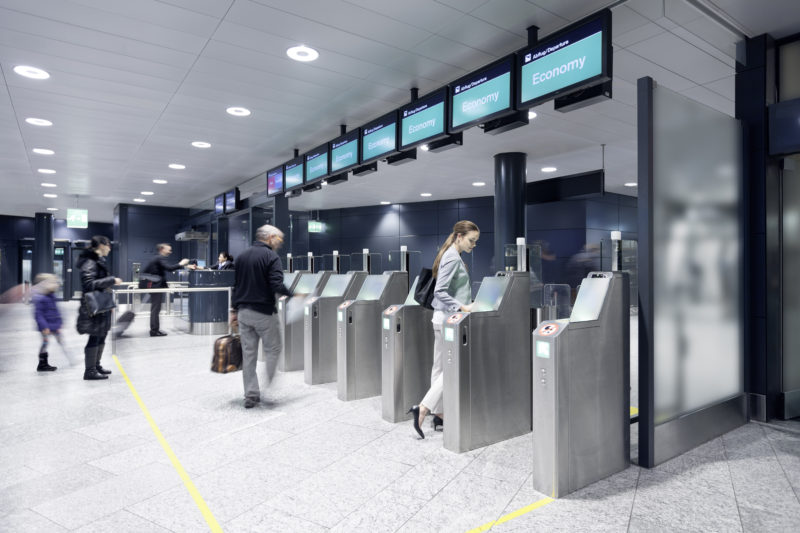
For architects and building planners, it’s necessary to consider all of these different requirements at the very earliest stage of planning such a structure. While security has always been an issue at airports, in recent years its importance has increased substantially. And the challenge that many airports face is ensuring these requirements are met, while at the same time facilitating quick processing, smooth operations and a welcoming ambience for large numbers of people.
In 2016, over 80 million people passed through LAX, otherwise known as Los Angeles Airport. And every one of those encountered one sort of entry point or another. It begins of course with the basic building access…
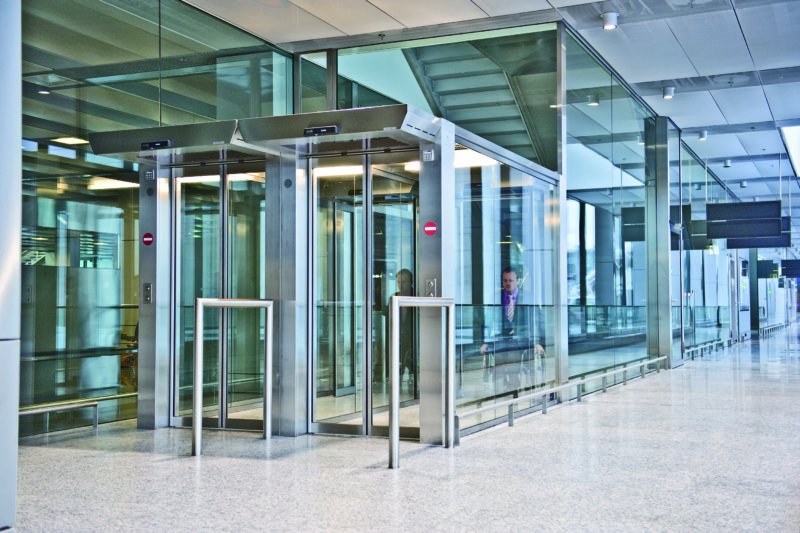
REVOLVING AND/OR SLIDING DOORS
These entry and exit points throw up their own unique set of challenges, with several elements needing to be addressed, including climate control, energy saving and cost control; attractive design and seamless integration into the building; the safety of people entering and exiting the building; and emergency exit management and evacuation.
AUTOMATED BOARDING PASS CONTROL
Once passengers are in the building, their flow can be greatly improved by the installation of automated boarding pass control, facilitating their entry into the departure zone on their way towards security screening. This kind of automation aids airport staff by checking in passengers’ boarding passes much more efficiently, reducing queues at the departure hall entrance and eliminating congestion.
Not only does this lead to happier and calmer passengers, but if issues do arise security staff are able to go straight to the source of the problem and aren’t hampered by having to negotiate large crowds of milling and perhaps disgruntled folk.
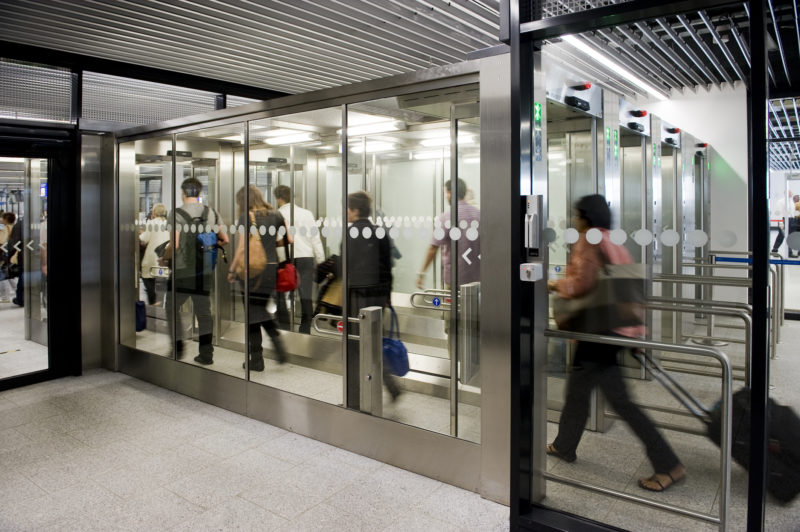
AUTOMATED BORDER CROSSING
Alongside check-in and security screening, other areas that benefit hugely from automation are the immigration checkpoints, when shorter queues and improved passenger flow facilitate greater airport efficiency, while also reducing pressure on immigration officers.
With straightforward cases handled by an automated system, they are free to give assistance where it’s really needed – to those with disabilities or young children, or who may be elderly or travelling in groups, for example.
An additional benefit is the ability of automated systems to detect invalid or forged documents more efficiently.
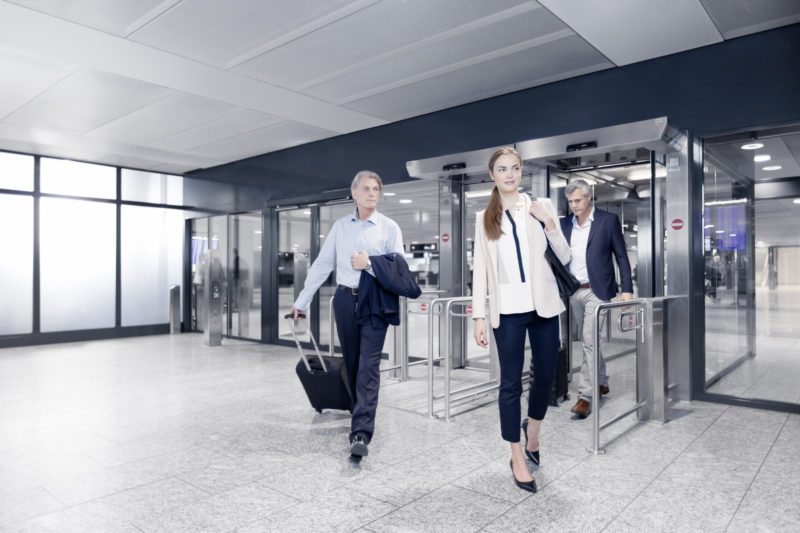
VIP LOUNGE ACCESS
The last thing a VIP customer wants after perhaps being held up at the baggage x-ray or check-in is to then face another line-up to get into their members’ lounge. But a sensor barrier can speed up the process, eliminating the need for staff to check each and every boarding pass, and allowing a tired and hungry traveller to move swiftly to the comfy surrounds of the lounge and a refreshing cup of tea.
SELF-BOARDING
One of the biggest causes of delays at airports is a long passenger boarding time, but self-boarding gates can aid in reducing the queues and improving service levels. Again, with the majority of passengers able to utilise such systems, ground staff are able to assist those who really need help.
CUSTOMS EXIT
At the other end of a journey, it’s all about picking up baggage and heading for customs control. Here it’s imperative that people from the public area (landside) are prevented from entering the baggage reclaim area. Fully automatic, intelligent swing doors facilitate a smooth passenger flow without compromising airport security.
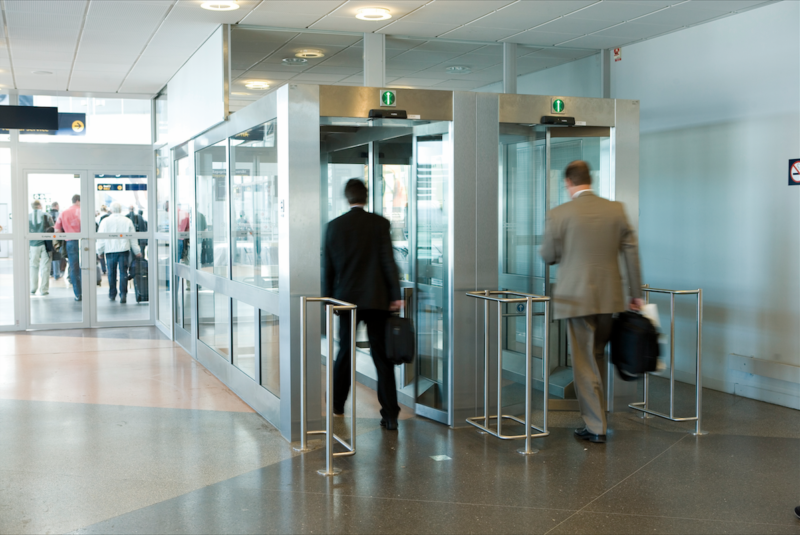
AIR/LANDSIDE ACCESS
One of the most sensitive areas for access control is in the arrivals lounge, where those who are landside must be strictly segregated from the security area (airside). But, as Hugh Grant so memorably noted in Love, Actually, this is where emotionally charged reunions often take place, as people welcome their long lost loved ones. So it’s necessary to ensure that passengers can disembark and cross quickly and easily to those open arms at landside without crossing paths with any passengers travelling in the other direction. One-way corridors are the solution here, ensuring the smooth exit of arriving passengers, without allowing them or anyone else back into the security zone.
As extensive as they seem, these are just the most obvious access points to consider in airport design. Staff access is a whole different issue, as is perimeter security. And the technology across all of these points is changing rapidly.
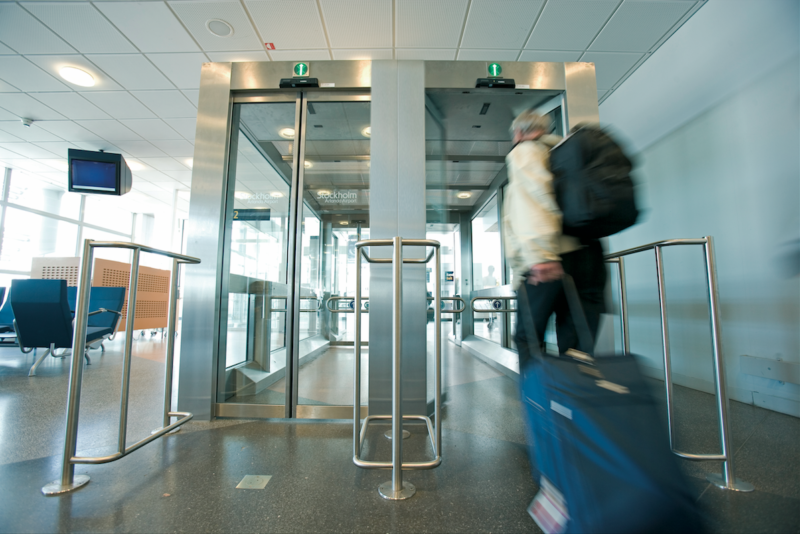
While self-service and automation may now be commonplace, biometric identification and verification are looming as a coming trend. Improved data gathering from the implementation of automated systems means that airports will be able to relay up-to-the-minute information to passengers and others regarding waiting times. And in the not too distant future we could see further advances in access control, utilising artificial intelligence, the Internet of Things, wearable technology and even robots, which could assist with luggage, directions and information… “Absolutely no danger, Will Robinson.”
Written by David Wilson, manager – Physical Access Systems, Australia and New Zealand, dormakaba.
Dormakaba is an AR Adviser of ADR.
This article originally appeared in AR149 – available online and digitally through Zinio.
—
Read dormakaba’s last advisory piece for AR on access control solutions for sufferers of dementia.
















